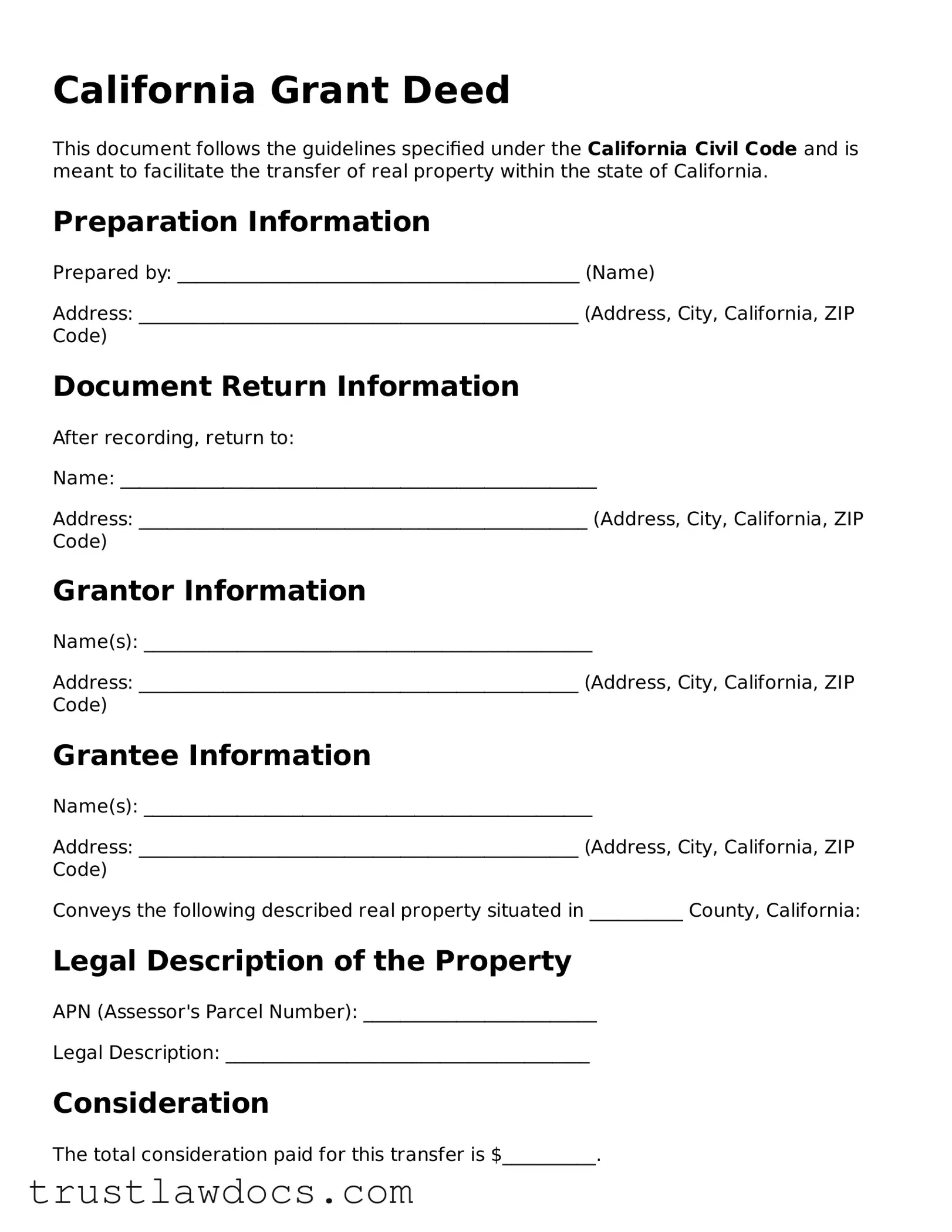California Grant Deed
This document follows the guidelines specified under the California Civil Code and is meant to facilitate the transfer of real property within the state of California.
Preparation Information
Prepared by: ___________________________________________ (Name)
Address: _______________________________________________ (Address, City, California, ZIP Code)
Document Return Information
After recording, return to:
Name: ___________________________________________________
Address: ________________________________________________ (Address, City, California, ZIP Code)
Grantor Information
Name(s): ________________________________________________
Address: _______________________________________________ (Address, City, California, ZIP Code)
Grantee Information
Name(s): ________________________________________________
Address: _______________________________________________ (Address, City, California, ZIP Code)
Conveys the following described real property situated in __________ County, California:
Legal Description of the Property
APN (Assessor's Parcel Number): _________________________
Legal Description: _______________________________________
Consideration
The total consideration paid for this transfer is $__________.
Terms of the Transfer
The Grantor(s) hereby grants to the Grantee(s) all their right, title, and interest in the described property, reserving no interest in the property except as otherwise explicitly stated herein.
Signatures
This deed is executed on the date of __________ (Month, Day, Year).
Grantor's Signature: _______________________________
Grantor's Printed Name: ____________________________
Grantee's Signature: ________________________________
Grantee's Printed Name: ____________________________
Acknowledgment
A California Notary Public must acknowledge this deed.
Recording Requested By
And when recorded, mail to:
Name: ______________________________________________
Address: ____________________________________________ (Address, City, California, ZIP Code)
Notary Public
State of California
County of ___________
On ______________ (Date), before me, ___________________ (Name of Notary), personally appeared _________________, who proved to me on the basis of satisfactory evidence to be the person(s) whose name(s) is/are subscribed to the within instrument and acknowledged to me that he/she/they executed the same in his/her/their authorized capacity(ies), and that by his/her/their signature(s) on the instrument, the person(s), or the entity upon behalf of which the person(s) acted, executed the instrument.
Witness my hand and official seal.
(Seal)
Notary Signature: ________________________________
Notary Printed Name: _____________________________
